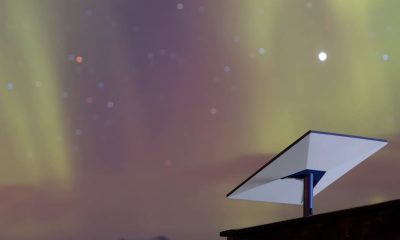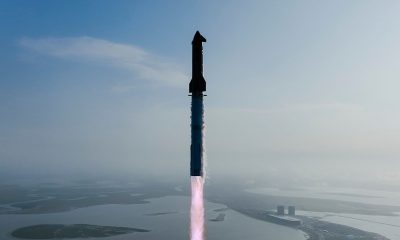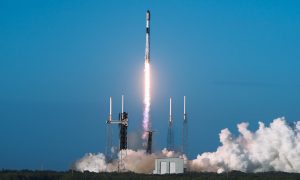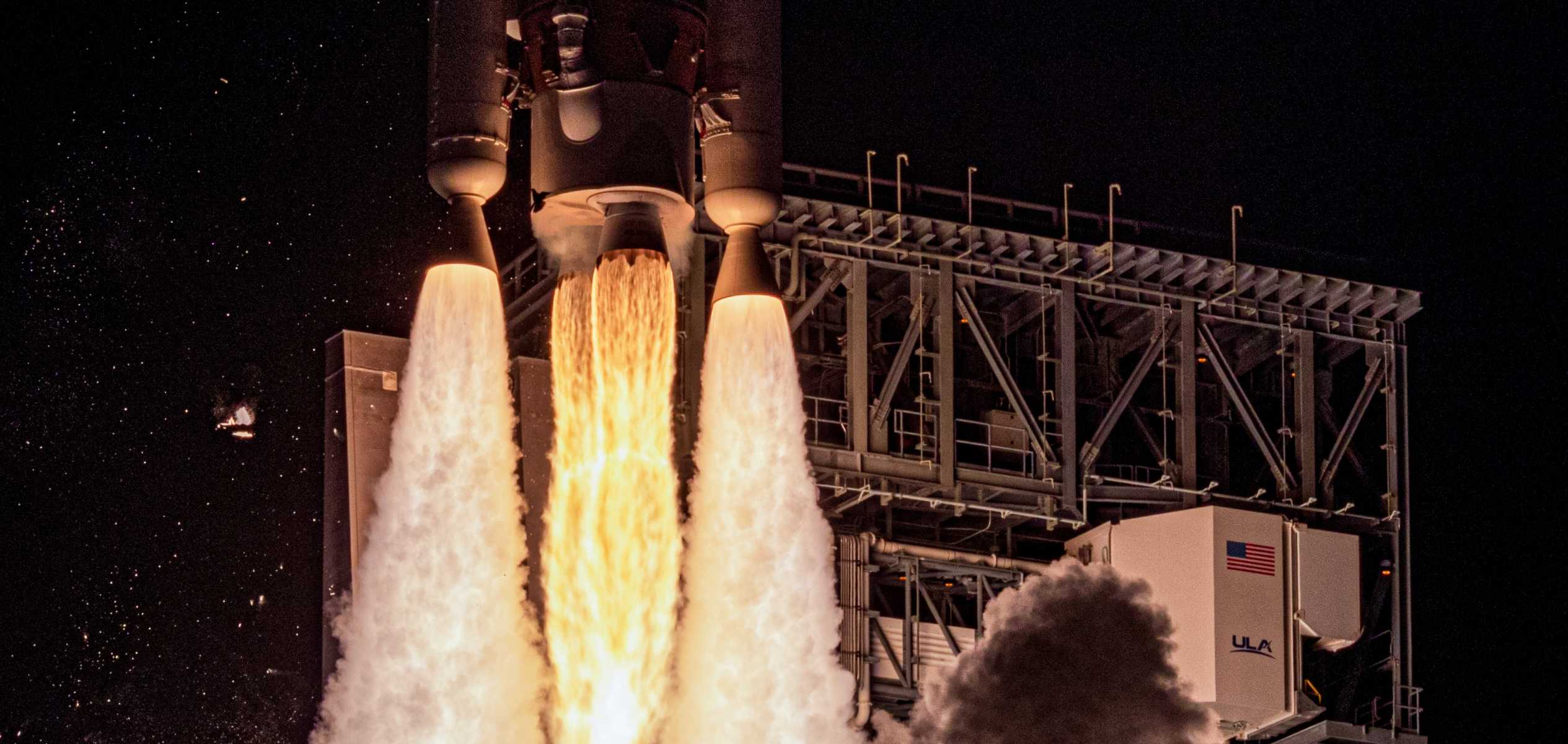

News
Boeing's astronaut capsule flies off course, fate uncertain after launch debut
Roughly 30 minutes after lifting off for the first time on a United Launch Alliance (ULA) Atlas V rocket, Boeing’s Starliner crew capsule suffered a major failure when it attempted to raise its orbit with onboard engines.
A few hours after the failure came to light, NASA and Boeing held a press conference to update members of the media on the situation, with the space agency offering some candid – if a bit odd – insight into Starliner’s anomalous launch debut. Before the spacecraft’s software threw a wrench into the gears, the plan was for Starliner to separate from ULA’s Atlas V Centaur upper stage and use its own thrusters to reach orbit and begin the trek up Earth’s gravity well to the International Space Station (ISS).
While it will likely take weeks or even months for Boeing and NASA to determine exactly what went wrong during the mission, preliminary information has already begun to paint a fairly detailed picture.
Around 15 minutes after liftoff, Starliner separated from the rocket as intended but it appears that things began to go awry almost immediately afterward. Most notably, according to NASA administrator Jim Bridenstine’s tweets and later comments, a very early look at the telemetry suggests that Starliner’s internal clock was somehow tricked into believing that the time was either earlier or later than it actually was.
Thinking that it was in the midst of a lengthy thruster firing meant to raise its orbit and send the spacecraft on its way to the space station, Starliner was thus focused on ensuring that it was pointed as accurately as possible. Although the space station is the size of a football field, in the vastness of space, rendezvousing with it is a bit like threading a needle. While firing thrusters to do so, spacecraft thus need to point themselves as accurately as possible.
While coasting before or after one of those orbit-boosting thruster firings, Starliner thought it was actually burning towards the space station and was thus very carefully controlling its orientation with a dozen or so smaller thrusters. In short, those unintentional thruster firings burned through a ton of Starliner’s limited propellant supply – enough to make it impossible (or nearly so) for the spacecraft to rendezvous and dock the ISS, a central purpose of this particular launch.
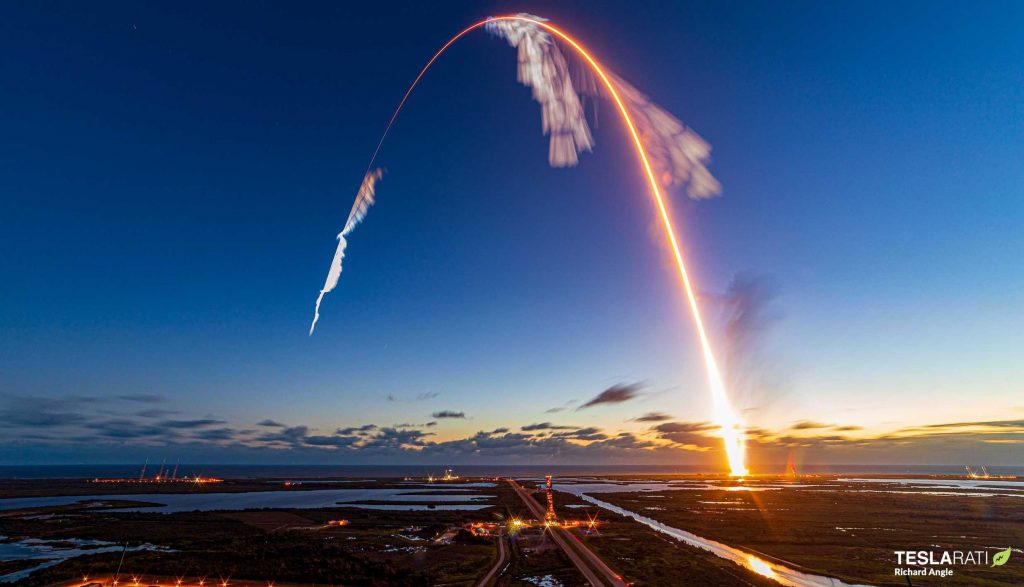
This ultimately means that Starliner is leaning heavily on the “test” aspect of this Orbital Flight Test (OFT), uncovering failure modes and bugs that Boeing was clearly unable to tease out with ground testing and simulation. While in a totally different ballpark, SpaceX similar Crew Dragon spacecraft suffered its own major failure earlier this year, although that capsule explosion occurred during intentional ground testing, whereas Starliner’s software failed during its high-profile launch debut and has severely curtailed the scope of the spacecraft’s first orbital flight test.
In fact, Bridenstine was unable to rule out the possibility that Boeing will have to attempt a second uncrewed orbital flight test (OFT) before Starliner will be qualified to launch the space agency’s astronauts. Although early signs suggest that Boeing will still be able to attempt to deorbit and recover the spacecraft a day or two from now, the fact that Starliner will not be able to perform critical demonstrations of its ISS rendezvous and docking capabilities will make it far harder for NASA to rationally certify the spacecraft for astronaut launches.
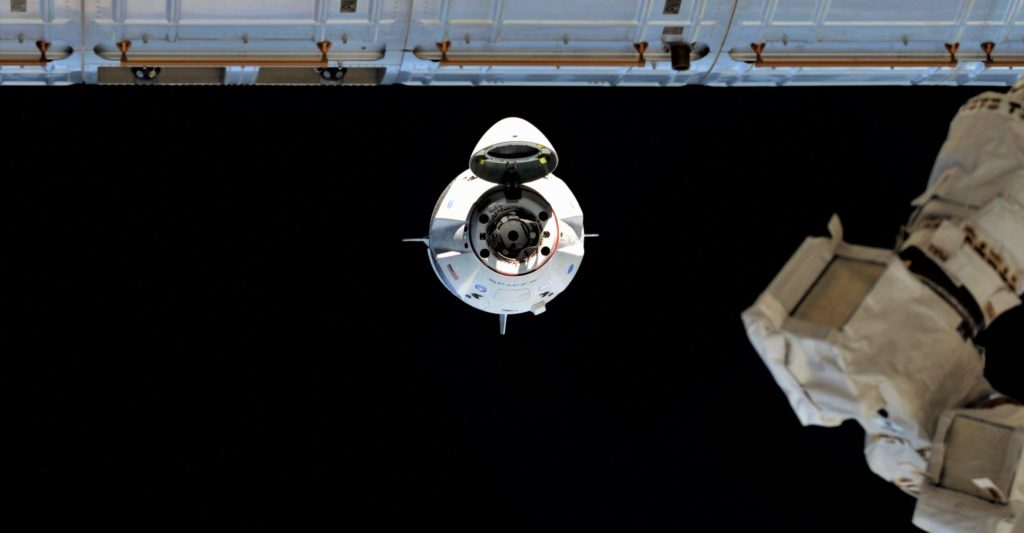
SpaceX’s Crew Dragon, for reference, completed a more or less flawless launch, orbit raise, and rendezvous before docking with the ISS. It’s almost impossible to imagine NASA giving SpaceX permission to proceed immediately into its first astronaut launch if Crew Dragon had failed to reach the proper orbit or dock with the space station.
Regardless, it’s far too early to tell whether Boeing will have to repeat Starliner’s OFT. If Starliner performs absolutely perfectly between now and its planned soft-landing in New Mexico, there might be a chance that NASA will still allow Boeing to effectively cut corners to its astronaut launch debut, but only time will tell.
Check out Teslarati’s Marketplace! We offer Tesla accessories, including for the Tesla Cybertruck and Tesla Model 3.
News
Tesla begins Robotaxi certification push in Arizona: report
Tesla seems serious about expanding its Robotaxi service to several states in the coming months.

Tesla has initiated discussions with Arizona transportation regulators to certify its driverless Robotaxi service in the state, as per a recent report from Bloomberg News. The move follows Tesla’s launch of its Robotaxi pilot program in Austin, Texas, as well as CEO Elon Musk’s recent comments about the service’s expansion in the Bay Area.
The Arizona Department of Transportation confirmed to Bloomberg that Tesla has reached out to begin the certification process for autonomous ride-sharing operations in the state. While details remain limited, the outreach suggests that Tesla is serious about expanding its driverless Robotaxi service to several territories in the coming months.
The Arizona development comes as Tesla prepares to expand its service area in Austin this weekend, as per CEO Elon Musk in a post on X. Musk also stated that Tesla is targeting the San Francisco Bay Area as its next major market, with a potential launch “in a month or two,” pending regulatory approvals.
Tesla first launched its autonomous ride-hailing program on June 22 in Austin with a small fleet of Model Y vehicles, accompanied by a Tesla employee in the passenger seat to monitor safety. While still classified as a test, Musk has said the program will expand to about 1,000 vehicles in the coming months. Tesla will later upgrade its Robotaxi fleet with the Cyercab, a two-seater that is designed without a steering wheel.
Sightings of Cybercab castings around the Giga Texas complex suggests that Tesla may be ramping the initial trial production of the self-driving two-seater. Tesla, for its part, has noted in the past that volume production of the Cybercab is expected to start sometime next year.
In California, Tesla has already applied for a transportation charter-party carrier permit from the state’s Public Utilities Commission. The company is reportedly taking a phased approach to operating in California, with the Robotaxi service starting with pre-arranged rides for employees in vehicles with safety drivers.
News
Tesla sets November 6 date for 2025 Annual Shareholder Meeting
The automaker announced the date on Thursday in a Form 8-K.

Tesla has scheduled its 2025 annual shareholder meeting for November 6, addressing investor concerns that the company was nearing a legal deadline to hold the event.
The automaker announced the date on Thursday in a Form 8-K submitted to the United States Securities and Exchange Commission (SEC). The company also listed a new proposal submission deadline of July 31 for items to be included in the proxy statement.
Tesla’s announcement followed calls from a group of 27 shareholders, including the leaders of large public pension funds, which urged Tesla’s board to formally set the meeting date, as noted in a report from The Wall Street Journal.
The group noted that under Texas law, where Tesla is now incorporated, companies must hold annual meetings within 13 months of the last one if requested by shareholders. Tesla’s previous annual shareholder meeting was held on June 13, 2024, which placed the July 13 deadline in focus.
Tesla originally stated in its 2024 annual report that it would file its proxy statement by the end of April. However, an amended filing on April 30 indicated that the Board of Directors had not yet finalized a meeting date, at least at the time.
The April filing also confirmed that Tesla’s board had formed a special committee to evaluate certain matters related to CEO Elon Musk’s compensation plan. Musk’s CEO performance award remains at the center of a lengthy legal dispute in Delaware, Tesla’s former state of incorporation.
Due to the aftermath of Musk’s legal dispute about his compensation plan in Delaware, he has not been paid for his work at Tesla for several years. Musk, for his part, has noted that he is more concerned about his voting stake in Tesla than his actual salary.
At last year’s annual meeting, TSLA shareholders voted to reapprove Elon Musk’s compensation plan and ratified Tesla’s decision to relocate its legal domicile from Delaware to Texas.
Elon Musk
Grok coming to Tesla vehicles next week “at the latest:” Elon Musk
Grok’s rollout to Tesla vehicles is expected to begin next week at the latest.

Elon Musk announced on Thursday that Grok, the large language model developed by his startup xAI, will soon be available in Tesla vehicles. Grok’s rollout to Tesla vehicles is expected to begin next week at the latest, further deepening the ties between the two Elon Musk-led companies.
Tesla–xAI synergy
Musk confirmed the news on X shortly after livestreaming the release of Grok 4, xAI’s latest large language model. “Grok is coming to Tesla vehicles very soon. Next week at the latest,” Musk wrote in a post on social media platform X.
During the livestream, Musk and several members of the xAI team highlighted several upgrades to Grok 4’s voice capabilities and performance metrics, positioning the LLM as competitive with top-tier models from OpenAI and Google.
The in-vehicle integration of Grok marks a new chapter in Tesla’s AI development. While Tesla has long relied on in-house systems for autonomous driving and energy optimization, Grok’s integration would introduce conversational AI directly into its vehicles’ user experience. This integration could potentially improve customer interaction inside Tesla vehicles.
xAI and Tesla’s collaborative footprint
Grok’s upcoming rollout to Tesla vehicles adds to a growing business relationship between Tesla and xAI. Earlier this year, Tesla disclosed that it generated $198.3 million in revenue from commercial, consulting, and support agreements with xAI, as noted in a report from Bloomberg News. A large portion of that amount, however, came from the sale of Megapack energy storage systems to the artificial intelligence startup.
In July 2023, Musk polled X users about whether Tesla should invest $5 billion in xAI. While no formal investment has been made so far, 68% of poll participants voted yes, and Musk has since stated that the idea would be discussed with Tesla’s board.
-

 Elon Musk1 week ago
Elon Musk1 week agoTesla investors will be shocked by Jim Cramer’s latest assessment
-

 Elon Musk3 days ago
Elon Musk3 days agoElon Musk confirms Grok 4 launch on July 9 with livestream event
-

 Elon Musk14 hours ago
Elon Musk14 hours agoxAI launches Grok 4 with new $300/month SuperGrok Heavy subscription
-

 News7 days ago
News7 days agoTesla Model 3 ranks as the safest new car in Europe for 2025, per Euro NCAP tests
-

 Elon Musk2 weeks ago
Elon Musk2 weeks agoA Tesla just delivered itself to a customer autonomously, Elon Musk confirms
-

 Elon Musk1 week ago
Elon Musk1 week agoxAI’s Memphis data center receives air permit despite community criticism
-

 Elon Musk2 weeks ago
Elon Musk2 weeks agoTesla’s Omead Afshar, known as Elon Musk’s right-hand man, leaves company: reports
-

 News2 weeks ago
News2 weeks agoXiaomi CEO congratulates Tesla on first FSD delivery: “We have to continue learning!”




